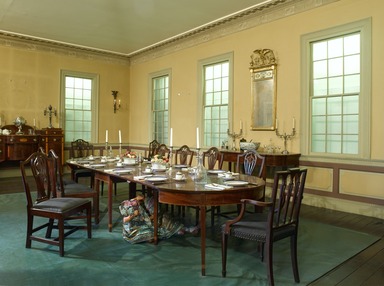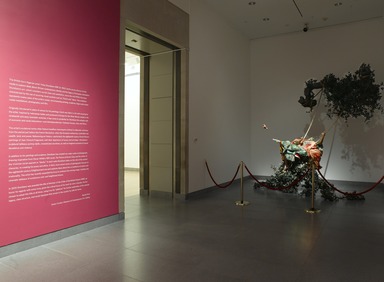

Mother and Father Worked Hard So I Can Play: Yinka Shonibare, June 26, 2009 through September 20, 2009 (Image: DIG_E2009_Yinka_Shonibare_01_PS2.jpg Brooklyn Museum photograph, 2009)

Mother and Father Worked Hard So I Can Play: Yinka Shonibare, June 26, 2009 through September 20, 2009 (Image: DIG_E2009_Yinka_Shonibare_02_PS2.jpg Brooklyn Museum photograph, 2009)
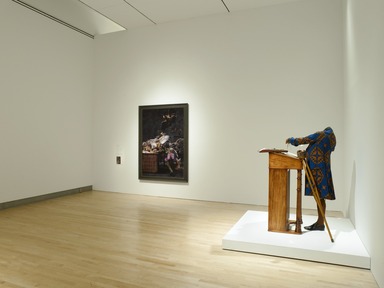
Mother and Father Worked Hard So I Can Play: Yinka Shonibare, June 26, 2009 through September 20, 2009 (Image: DIG_E2009_Yinka_Shonibare_03_PS2.jpg Brooklyn Museum photograph, 2009)

Mother and Father Worked Hard So I Can Play: Yinka Shonibare, June 26, 2009 through September 20, 2009 (Image: DIG_E2009_Yinka_Shonibare_04_PS2.jpg Brooklyn Museum photograph, 2009)
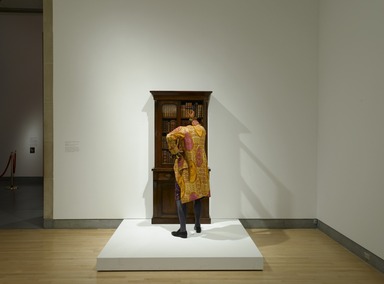
Mother and Father Worked Hard So I Can Play: Yinka Shonibare, June 26, 2009 through September 20, 2009 (Image: DIG_E2009_Yinka_Shonibare_05_PS2.jpg Brooklyn Museum photograph, 2009)

Mother and Father Worked Hard So I Can Play: Yinka Shonibare, June 26, 2009 through September 20, 2009 (Image: DIG_E2009_Yinka_Shonibare_06_PS2.jpg Brooklyn Museum photograph, 2009)
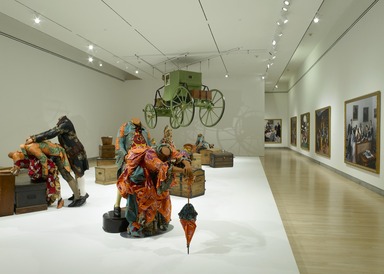
Mother and Father Worked Hard So I Can Play: Yinka Shonibare, June 26, 2009 through September 20, 2009 (Image: DIG_E2009_Yinka_Shonibare_07_PS2.jpg Brooklyn Museum photograph, 2009)

Mother and Father Worked Hard So I Can Play: Yinka Shonibare, June 26, 2009 through September 20, 2009 (Image: DIG_E2009_Yinka_Shonibare_08_PS2.jpg Brooklyn Museum photograph, 2009)
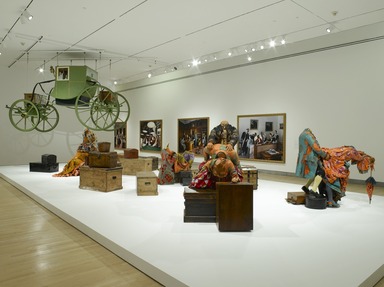
Mother and Father Worked Hard So I Can Play: Yinka Shonibare, June 26, 2009 through September 20, 2009 (Image: DIG_E2009_Yinka_Shonibare_09_PS2.jpg Brooklyn Museum photograph, 2009)
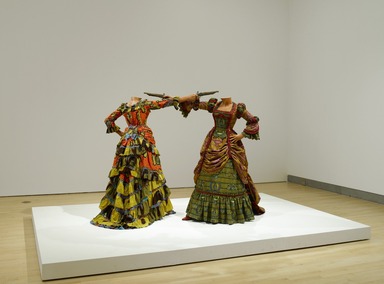
Mother and Father Worked Hard So I Can Play: Yinka Shonibare, June 26, 2009 through September 20, 2009 (Image: DIG_E2009_Yinka_Shonibare_10_PS2.jpg Brooklyn Museum photograph, 2009)

Mother and Father Worked Hard So I Can Play: Yinka Shonibare, June 26, 2009 through September 20, 2009 (Image: DIG_E2009_Yinka_Shonibare_11_PS2.jpg Brooklyn Museum photograph, 2009)
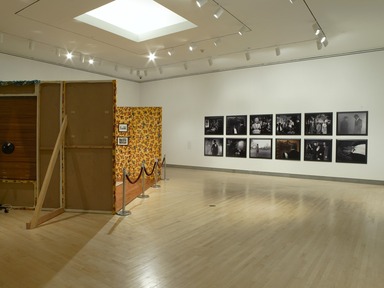
Mother and Father Worked Hard So I Can Play: Yinka Shonibare, June 26, 2009 through September 20, 2009 (Image: DIG_E2009_Yinka_Shonibare_12_PS2.jpg Brooklyn Museum photograph, 2009)

Mother and Father Worked Hard So I Can Play: Yinka Shonibare, June 26, 2009 through September 20, 2009 (Image: DIG_E2009_Yinka_Shonibare_13_PS2.jpg Brooklyn Museum photograph, 2009)
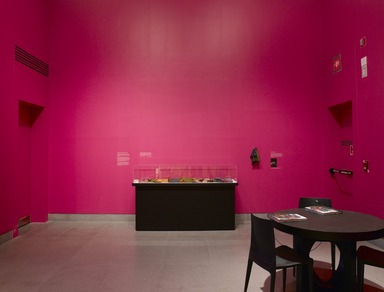
Mother and Father Worked Hard So I Can Play: Yinka Shonibare, June 26, 2009 through September 20, 2009 (Image: DIG_E2009_Yinka_Shonibare_14_PS2.jpg Brooklyn Museum photograph, 2009)
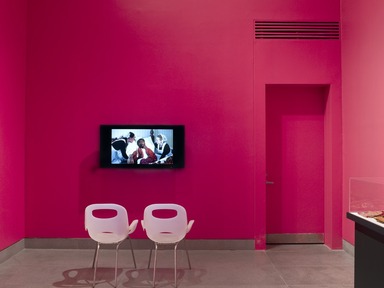
Mother and Father Worked Hard So I Can Play: Yinka Shonibare, June 26, 2009 through September 20, 2009 (Image: DIG_E2009_Yinka_Shonibare_15_PS2.jpg Brooklyn Museum photograph, 2009)

Mother and Father Worked Hard So I Can Play: Yinka Shonibare, June 26, 2009 through September 20, 2009 (Image: DIG_E2009_Yinka_Shonibare_16_PS2.jpg Brooklyn Museum photograph, 2009)

Mother and Father Worked Hard So I Can Play: Yinka Shonibare, June 26, 2009 through September 20, 2009 (Image: DIG_E2009_Yinka_Shonibare_17_PS2.jpg Brooklyn Museum photograph, 2009)
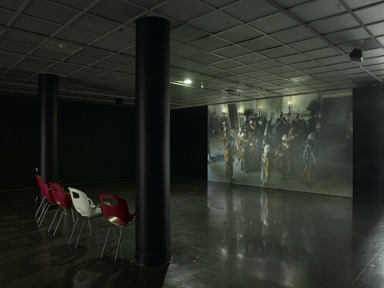
Mother and Father Worked Hard So I Can Play: Yinka Shonibare, June 26, 2009 through September 20, 2009 (Image: DIG_E2009_Yinka_Shonibare_18_PS2.jpg Brooklyn Museum photograph, 2009)
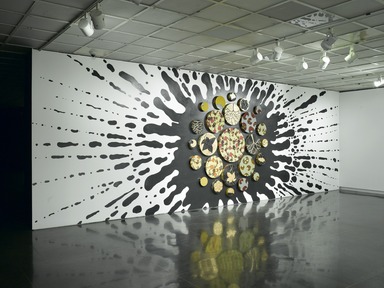
Mother and Father Worked Hard So I Can Play: Yinka Shonibare, June 26, 2009 through September 20, 2009 (Image: DIG_E2009_Yinka_Shonibare_19_PS2.jpg Brooklyn Museum photograph, 2009)

Mother and Father Worked Hard So I Can Play: Yinka Shonibare, June 26, 2009 through September 20, 2009 (Image: DIG_E2009_Yinka_Shonibare_20_PS2.jpg Brooklyn Museum photograph, 2009)

Mother and Father Worked Hard So I Can Play: Yinka Shonibare, June 26, 2009 through September 20, 2009 (Image: DIG_E2009_Yinka_Shonibare_21_PS2.jpg Brooklyn Museum photograph, 2009)

Mother and Father Worked Hard So I Can Play: Yinka Shonibare, June 26, 2009 through September 20, 2009 (Image: DIG_E2009_Yinka_Shonibare_22_PS2.jpg Brooklyn Museum photograph, 2009)
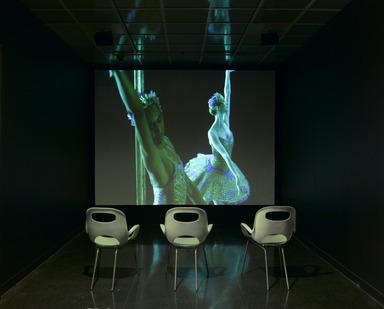
Mother and Father Worked Hard So I Can Play: Yinka Shonibare, June 26, 2009 through September 20, 2009 (Image: DIG_E2009_Yinka_Shonibare_23_PS2.jpg Brooklyn Museum photograph, 2009)
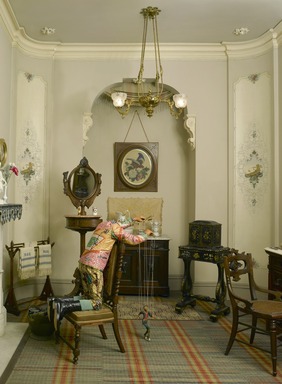
Mother and Father Worked Hard So I Can Play: Yinka Shonibare, June 26, 2009 through September 20, 2009 (Image: DIG_E2009_Yinka_Shonibare_24_Civil_War_Dressing_Alcove_PS2.jpg Brooklyn Museum photograph, 2009)
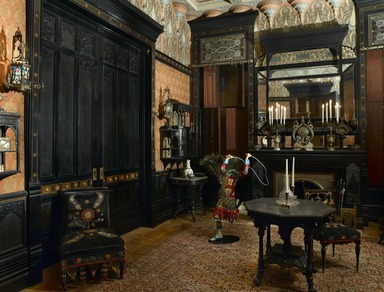
Mother and Father Worked Hard So I Can Play: Yinka Shonibare, June 26, 2009 through September 20, 2009 (Image: DIG_E2009_Yinka_Shonibare_25_The_Moorish_Room_PS2.jpg Brooklyn Museum photograph, 2009)
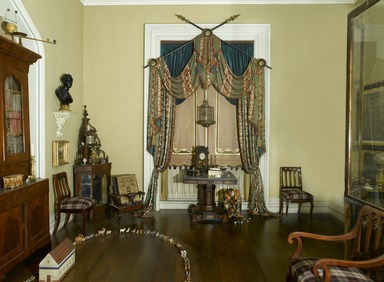
Mother and Father Worked Hard So I Can Play: Yinka Shonibare, June 26, 2009 through September 20, 2009 (Image: DIG_E2009_Yinka_Shonibare_26_Milligan_Parlor_PS2.jpg Brooklyn Museum photograph, 2009)

Mother and Father Worked Hard So I Can Play: Yinka Shonibare, June 26, 2009 through September 20, 2009 (Image: DIG_E2009_Yinka_Shonibare_27_Schenck_House_PS2.jpg Brooklyn Museum photograph, 2009)

Mother and Father Worked Hard So I Can Play: Yinka Shonibare, June 26, 2009 through September 20, 2009 (Image: DIG_E2009_Yinka_Shonibare_28_Schenck_House_PS2.jpg Brooklyn Museum photograph, 2009)

Mother and Father Worked Hard So I Can Play: Yinka Shonibare, June 26, 2009 through September 20, 2009 (Image: DIG_E2009_Yinka_Shonibare_29_Cupola_House_Bed_Chamber_PS2.jpg Brooklyn Museum photograph, 2009)
Mother and Father Worked Hard So I Can Play: Yinka Shonibare
-
Yinka Shonibare MBE
The British-born Nigerian artist Yinka Shonibare MBE (b. 1962) works across diverse artistic media to explore ideas about African contemporary identity and the legacy of European colonialism. Shonibare’s art, which considers social class and aesthetics, since the mid-1990s has been characterized by the use of recurring visual symbols such as “Dutch wax” fabric. This exhibition represents twelve years of the artist’s career, encompassing painting, sculpture, large-scale mixed-media installations, photography, and film.
Originally introduced in place of canvas for his paintings, Dutch wax fabric is rich with meaning for the artist. Inspired by Indonesian batiks and produced in Europe for the West African market in the nineteenth and early twentieth centuries, it has come to symbolize for Shonibare the complex web of economic and racial interactions—and interdependencies—between Europe, Asia, and Africa.
The artist’s sculptural works often feature headless mannequins clothed in elaborate costumes from the period just before the French Revolution, when the European aristocracy controlled vast wealth, land, and power. Referencing art history—particularly the eighteenth-century French Rococo paintings of Jean-Honoré Fragonard, with their depictions of luxury and privilege—Shonibare’s sculptural tableaux portray idyllic, romanticized narratives, as well as imagined scenarios of sexual decadence and violence.
In addition to his paintings and sculpture, Shonibare has created two major suites of photographs, drawing inspiration from Oscar Wilde’s 1891 novel, The Picture of Dorian Gray, and the notion of the Victorian social aspirant or “dandy.” In each suite Shonibare takes on the role of the central character, re-creating his poses and attire. A third, more recent series of photographs focuses on the eighteenth-century Enlightenment era and explores ideas about the co-existence of reason and irrationality. The artist has recently expanded his focus to embrace the moving image, creating vast, cinematic tableaux of sumptuous color and heightened drama.
In 2005 Shonibare was awarded the title of Member of the Order of the British Empire (MBE), an honor he regards with some irony, given the critical focus of his work for over a decade. He has chosen to adopt this title at all times, using it as his “platform” for further exploration of the colonial legacy, class structure, and social injustices that remain in the country he calls his home.
Rachel Kent
Senior Curator, Museum of Contemporary Art, Sydney -
Mother and Father Worked Hard So I Can Play, 2009
Yinka Shonibare MBE has created a site-specific installation in several of the Museum’s period rooms as a complement to the major exhibition on the 1st and 4th floors. This presentation is akin to a treasure hunt, with mischievous, playful children hidden in various parts of the historic interiors. As in much of Shonibare’s work, the figures are headless and dressed in Victorian costumes made from Dutch wax fabrics. The installation explores the idea of these rooms as expressions of American aspiration and achievement. The unruly children appear to be enjoying an overindulged youth, which is a benefit of the hard work of their ancestors.
-
April 1, 2009
The Brooklyn Museum will present the first major survey of the work of the British-based, Nigerian artist Yinka Shonibare MBE, whose art explores the relationship of contemporary African identity to European colonialism. Yinka Shonibare MBE will include more than twenty works, among them sculptures, paintings, large-scale installations, and films.
The exhibition will be on view in the fourth-floor galleries in the Schapiro Wing and in the first-floor Blum gallery. There will also be a site-specific installation created for this presentation featuring figures of small children and titled Mother and Father Worked Hard So I Can Play that will be on view in several of the Museum’s period rooms.
Shonibare is best known for working with visual symbols, especially the richly patterned Dutch wax fabric, produced in Europe for a West African market, which he uses in a wide range of applications. His tableaux of headless mannequins costumed in this fabric evoke themes of history and its legacy for future generations. Through these works he explores the complex web of interactions, both economic and racial, that reveal inequalities between the dominant and colonized cultures of Europe, Asia, and Africa.
Yinka Shonibare MBE is organized and toured by The Museum of Contemporary Art in Sydney, Australia. Judy Kim, Brooklyn Museum Curator of Exhibitions and Head of the Exhibitions Division, will coordinate the presentation, after which it will travel to the National Museum of African Art, Smithsonian Institution, Washington, D.C.
Yinka Shonibare MBE is sponsored by Bloomberg. Ovation TV is Media Sponsor.
Shonibare was born in 1962 in the United Kingdom to Nigerian parents, who returned to Lagos with their children when he was three. When he was seventeen he relocated to London, where he currently lives and works. He studied at Goldsmiths College, University of London, and at the Byam Shaw School of Art, Central Saint Martins College of Art and Design, University of the Arts, London. His work has been presented in solo and group exhibitions and is in public and private collections throughout the world. In 2005 Shonibare was awarded a Member of the Order of the British Empire, MBE, a distinction he uses despite and because of its irony.
While in art school Shonibare was asked why his work was not African in theme, a question that eventually led him to address issues of stereotypes and authenticity in his work. He selected the Dutch wax fabrics for use in multiple applications because they had become a signifier of authentic African identity while evoking a sense of ambiguity and complex origins; he opted to purchase them in London rather than Africa to render the material’s connotations of African exoticism false.
Citing feminist theory and deconstructionist literature as influences on his work, Shonibare explores the idea of the outsider masquerading within the dominant culture while remaining peripheral or external to it. Also influential are painters such as Thomas Gainsborough and Rococo artist Jean-Honoré Fragonard, who portrayed the eighteenth-century culture of excess. Shonibare’s sculpture installation The Swing (2001), which responds to Fragonard’s 1767 painting of the same name, depicting a privileged young woman at leisure, will be included in the exhibition.
In the site-specific installation Mother and Father Worked Hard So I Can Play, Shonibare will draw upon what he views as the expressions of American middle-class aspiration and achievement exemplified in the Museum’s period rooms to create a sort of treasure hunt. Headless figures of mischievous children whose presence will not be immediately apparent will be discovered playing in unexpected and physically challenging positions. The figures, exemplifying privileged youth, will be clad in Victorian costumes made from Dutch wax fabrics.
Also on view will be Scramble for Africa (2003), in which the artist draws upon the moment in nineteenth-century expansionism when leading world powers carved up the continent of Africa at the Berlin Conference of 1884-85. Various statesmen, typically headless, are huddled around a table using a large map of Africa to stake their claims. In addition, Black Gold II is one of a series of paintings that explores themes of colonial domination and exploitation, in which multinational companies extract Africa’s natural resources while its indigenous people live in poverty.
Shonibare continues his exploration of themes of wealth, class, and privilege with The Victorian Philanthropist’s Parlour (1996-97), the artist’s version of an opulent nineteenth-century interior, replete with furniture upholstered with Dutch wax fabrics and designed like a stage set in which visitors will be able to walk around. Diary of a Victorian Dandy, a suite of five large-scale photographs, depicts the dandy’s activities throughout the course of a day and features Shonibare and a supporting cast in Victorian costume.
The exhibition will include two recent films, among them Un Ballo in Maschera (2004), which takes its title from the Verdi opera, inspired by the assassination of Swedish King Gustav III at a masked ball in Stockholm. An ambitious, technically complex project, the 32-minute costume drama features performers in Dutch-wax-fabric ball gowns, frock coats, and Venetian masks, and explores themes of frivolity and excess.
Another site-specific installation, Party Time—Re-Imagine America: A Centennial Commission by Yinka Shonibare MBE, will be on view at The Newark Museum in Newark, New Jersey, from July 1, 2009 to January 3, 2010. Party Time is the artist’s first work to be situated in a Victorian-era home—the dining room of the museum’s 1885 Ballantine House. The installation imagines the scene of a late nineteenth-century dinner party in which eight headless figures, dressed in ornate period costumes made from Dutch wax textiles are midway through a lavish multicourse feast, as a servant appears bearing a peacock as the main course.
Yinka Shonibare MBE is accompanied by a lavishly illustrated catalogue published by Prestel, which includes essays by Rachel Kent, Senior Curator of the Museum of Contemporary Art in Sydney, who organized the exhibition, and by Robert Hobbs, Rhoda Thalheimer Endowed Chair in Art History at Virginia Commonwealth University. Also included is an in-depth interview with Yinka Shonibare conducted by Anthony Downey, Ph.D., Programme Director of the M. A. in Contemporary Art at Sotheby’s Institute in London.
Press Area of Website
View Original
